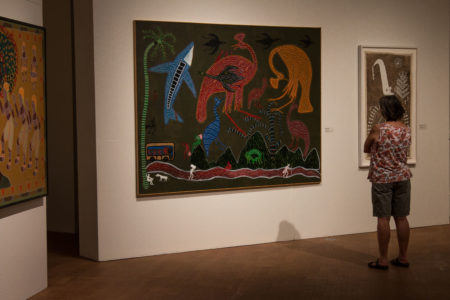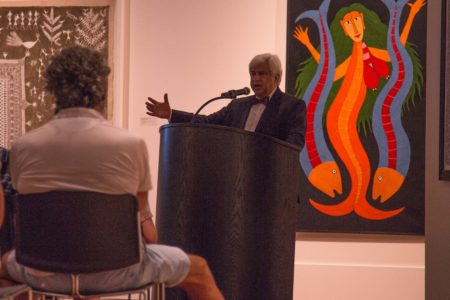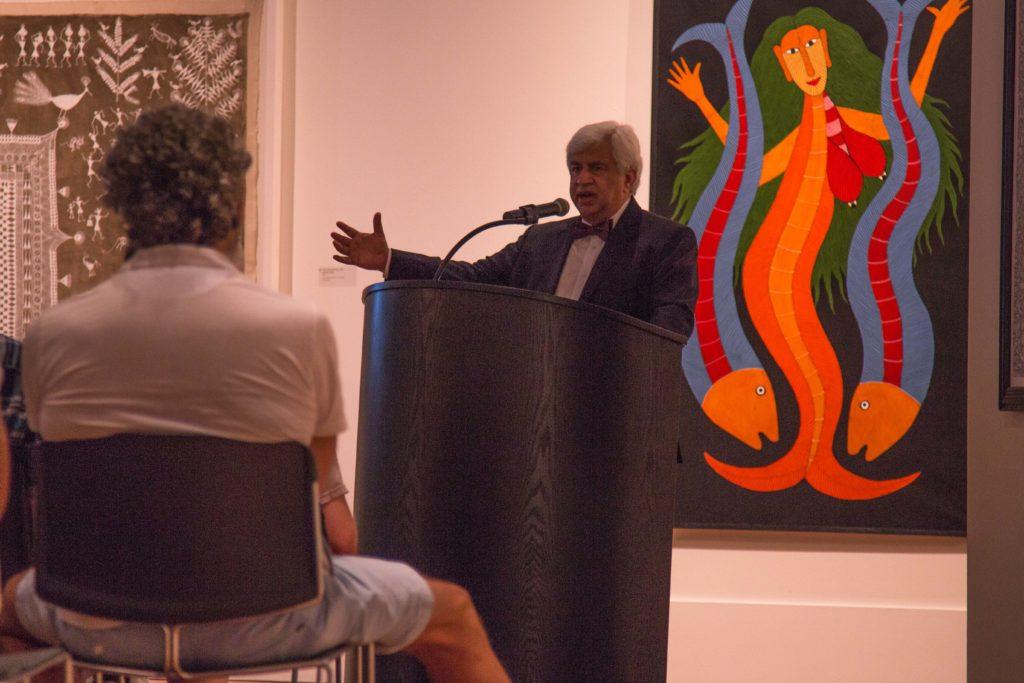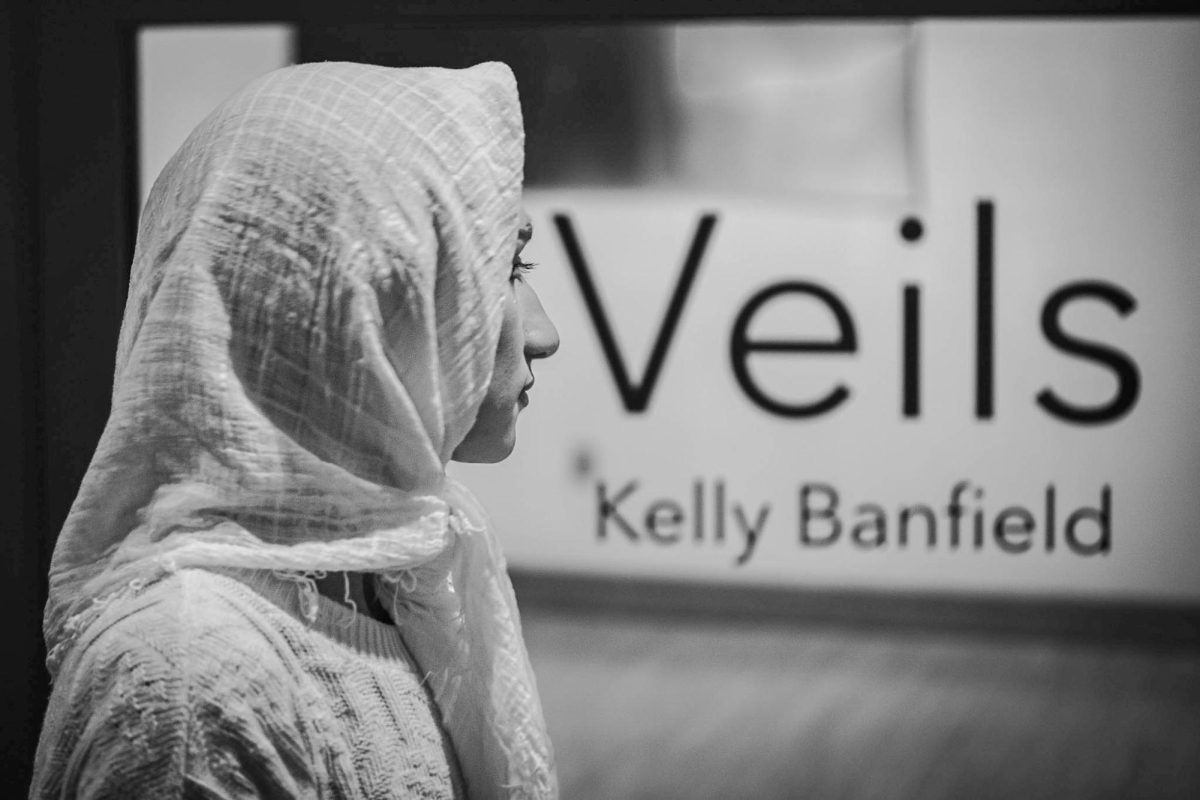Caryn McKechnie
mckechni@grinnell.edu
Last Friday Sept. 22 , Dr. Umesh Gaur presented a Faulconer Gallery talk titled “Many Visions, Many Versions: Art from Indigenous Communities in India.” Gaur and his wife, Dr. Sunanda Gaur, own what is reputably the largest collection of contemporary Indian art in the United States. During the talk, Gaur discussed the new Faulconer exhibit, which features indigenous art created in post-independence India.
“Our rapidly growing collection of this genre focuses on the art of Gond and the Warli tribes, women artists in the Mithila region of Bihar and the narrative scroll painters of West Bengal,” Gaur wrote in an email to The S&B. “Our collection consists of more than 300 paintings, drawings, prints and photographs. My personal favorite painting in this exhibition is Jangarh Singh Shyam’s ‘[(Untitled)] Tree and Panther.’” Some of the major artists in the exhibit include Jangarh Singh Shyam, Jivya Soma Mashe and Venkat Raman Shyam.
Previously, the Gaurs did not think that indigenous or folk art could constitute high art and hold a place in a museum. However, in 2005, they encountered contemporary Indian art at an Asia Society exhibition called “Edge of Desire,” which had gained great renown.
“The Grinnell exhibition reflects our relatively recent interest in collecting contemporary indigenous art from India,” Gaur wrote. “Growing up in India, we were always surrounded by folk arts and crafts. We grew up around hand-painted pottery, carved furniture and hand-knitted rugs in our homes. On religious holidays, our mothers and aunts would draw ritualistic images on the walls and floors to prepare the house for festivities. While all these folk arts and crafts were vibrant and decorative, we never considered them as collectible fine art.”
Umesh and Sunanda Gaur have collected art since 1995. He remembers the inception of his collecting vividly.
“We walked into the preview of Sotheby’s inaugural auction of modern and contemporary Indian art in New York. The artworks on sale immediately appealed to us at a visceral level, and before we knew it, we were owners of a rapidly growing collection of modern Indian art.”
As the partners continued to collect art, they discovered they enjoyed making it accessible to a larger viewership, especially, “working with museums in promoting modern Indian art in America,” Gaur wrote.
In 2002, the two curated a multi-collector exhibit at Rutgers University, in their neighborhood of Newark, New Jersey. From there, the collections have traveled all over, from Fairfield University to the University of Pennsylvania and the Georgia Museum of Art.
Over the years, the Gaur’s collecting has culminated in a gallery of their own, the BINDU Modern Gallery. This gallery presents exhibitions of their collected art on rotation. According to Gaur, BINDU “serves as a nucleus from which we promote modern Indian art with our engagement with museums, art scholars and the community.”


Photos by Helena Gruensteidl



































































